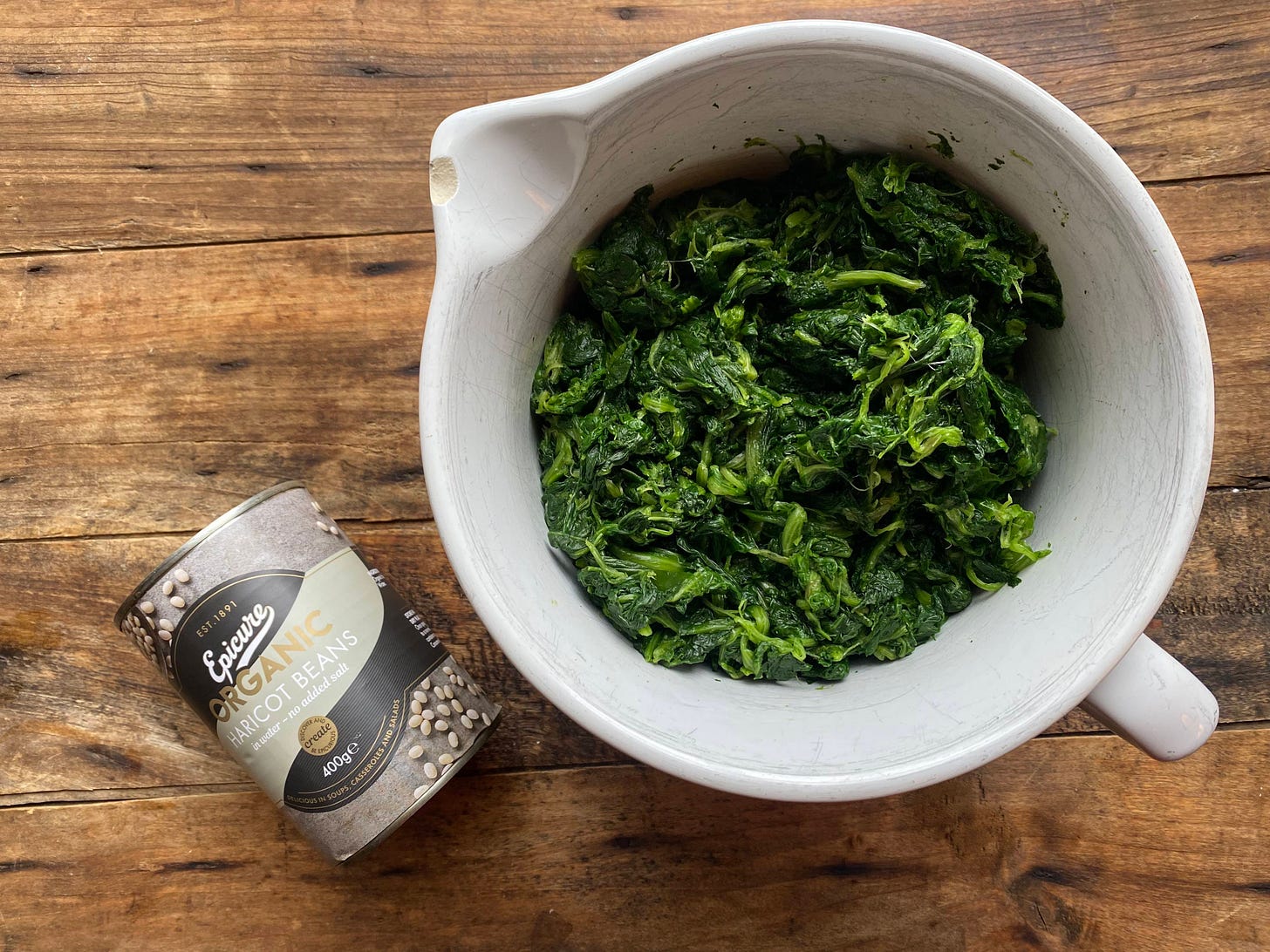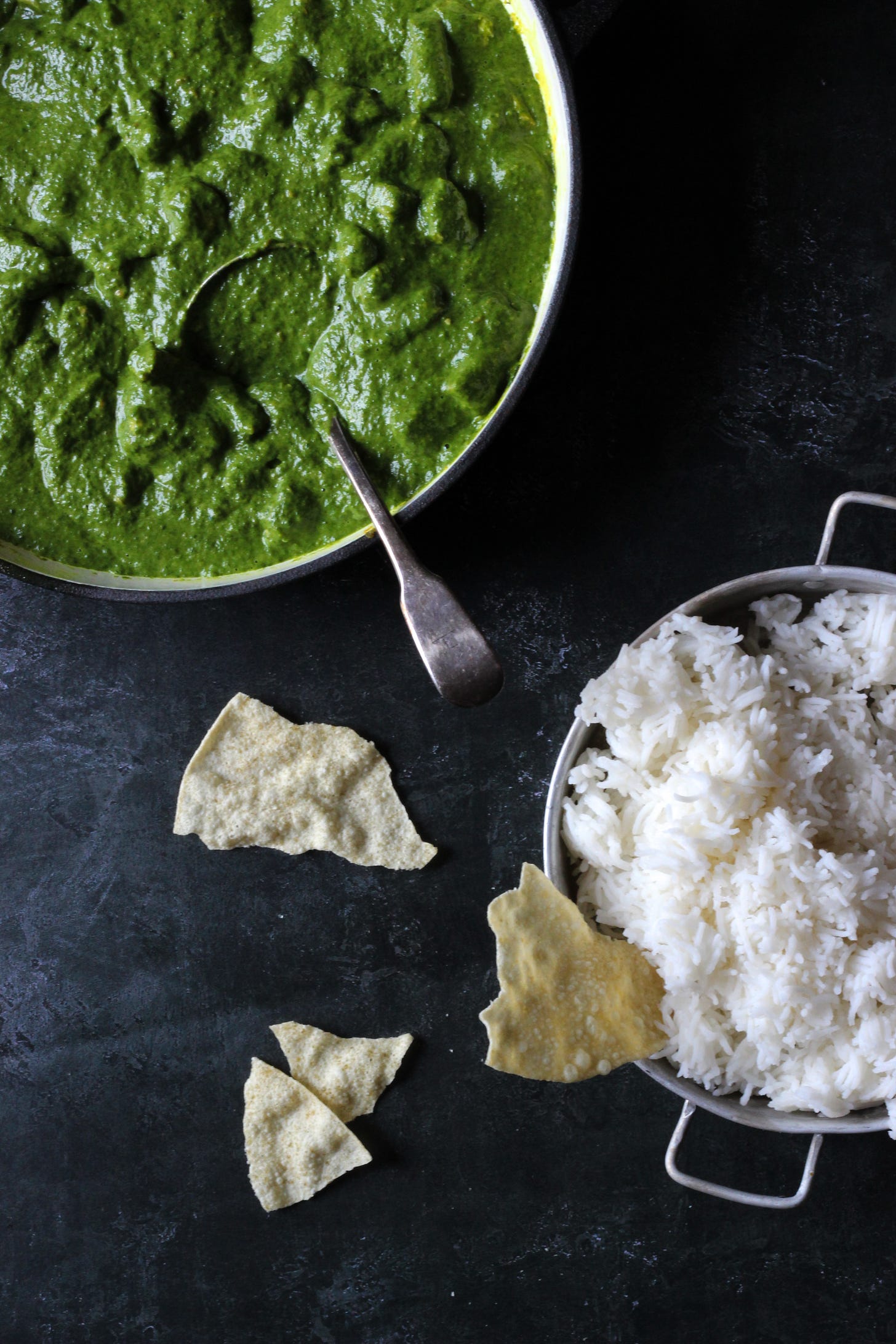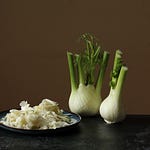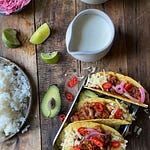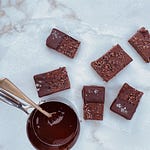As promised, I’m back with another cracking bean dish dear friends. This one is stealthy (my specialty). No evidence of beans - just a seriously creamy sauce with industrial amounts of spinach.
My kids are calling me a badass bean machine.
Beans are brilliant for our microbiome (the dynasty of bacteria paroling our pipes and inner workings). Food can be the greatest disrupter of our microbiome. But it’s also the greatest healer. Irrespective what your wellness resolutions may be, targeting our microbiome could be a game changer.
Our microbes help to regulate our appetite; they communicate to our brain; they help synthesise the nutrients we eat; they are intricately linked to our immune response; they help make serotonin, our happy hormone; and they are involved in so many other healthy hormonal processes. So tending to our gut health can be a really smart way of achieving our health goals in 2025.
Today’s recipe is designed to help!
Saag paneer is a velvety, delectable vegetarian dish beloved of Indian restaurants and someone I'm married to. Paneer is a soft-cheese. But this version is dairy free and vegan, making it easy to serve at a dinner party with minimal work and maximum adulation. Simply double the recipe to scale up, and highfive your halo.
Somewhere, in a supermarket near you, sits devilishly tasty tofu. You just have to find it. The trick is to look for marinated tofu pieces, which act like sponges to soak up delishy spices. We prefer using it to paneer cheese. I think you will too.
And in place of heavy cream, we blitz white beans to help it collapse into a silky sauce for our tofu.
If you’re not used to eating beans, it’s important to start small. Just like gym sessions, our body needs to get used to beans and legumes - all that gorgeous fermentable fibre needs specialised gut microbes to break it down. So if you’ve never had beans before, or never gone to a gym before, please don’t overdo it the first time! Your body will thank you to go slowly, gradually, and consistently, until you build up an appropriate tolerance level. Recipes like today’s Saag will help you do exactly that.
Frozen spinach is outrageously handy too, and delightfully compact compared to its fresh equivalent. I find packets of baby spinach take up too much space in my fridge, so I developed this recipe to suit my larder. Most of these ingredients will happily loiter in your kitchen, long after the fresh produce is gobbled. It's the perfect "what to cook when you don't know what to cook" dish.
We always have some form of home made pickle in the fridge, to brighten any dish but particularly this Saag. As promised, here are some links to kitchen tutorials on my favourite quick pickle recipes (there’s a zero waste cauliflower pickle; a prebiotic and probiotic red onion pickle; and a lively cucumber pickle).
And if you end up using Bold Bean & Co white beans for this recipe, then it’s certainly worth keeping the staggeringly good aqua faba to make any of the following recipes;
Aqua faba meringues
Tahini, coffee and toasted sesame brownies
Aqua faba mayo
Ginger & chocolate cookies
Chocolate rye & cardamom muffins
And that’s it!
Drop me a comment below, with your questions or preferences for my next kitchen demo. I’d love to hear what your kitchen is missing (more bean recipes?! Or bean lore?) What recipes do you need? What veg would you like to see me use more of?
Until then!
Love, light and bountiful beans,
Susan Jane
X
// Easy Vegetarian Saag //
Enough for 6 portions
This recipe calls for half a tin of white beans. Need ideas for the other half? Go ahead and use the “other half” of the tinned white beans to make a batch of PB Bean Bars or these fabulous Mint Chocolate Bites. Otherwise, feel free to freeze any leftover beans in their aqua faba. You can pop them straight into a curry later in the month.
Listen to this episode with a 7-day free trial
Subscribe to Taking the Hell out of Healthy to listen to this post and get 7 days of free access to the full post archives.







